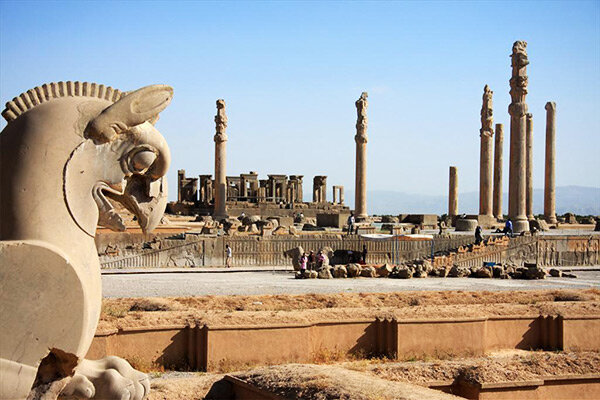Tehran – Experts are warnings by accelerating land subsidence near two iconic archaeological sites of Iran’s most iconic archaeological sites. Naksh Erostam, the Necropolis and Persepolis of King Achemenid, the ritual capital of the Achemenid Empire – the Plain of Facentel – the UNESCO registered ritual capital.
Excessive groundwater extraction for large-scale rice and corn cultivation on the Marvdasht plains has led to serious land subsidence, according to Mehdi Zare, a senior professor at the International Institute of Seismic Engineering and Seismic Research. Currently, the visible ground gap reaches nearly 10 meters from Naqsh-e Rostam and 300-500 meters from Persepolis.
In a recent panel of experts on climate change and cultural heritage, during the cultural heritage held at the Institute for Cultural Heritage and Tourism (RICHT), Zare warned that the subsidence rate in the Marvdasht region reached 20-30 centimeters per year.
“This phenomenon not only threatens Iran’s invaluable cultural heritage, but can also affect the activation of local fault lines,” he said.
Zare called for urgent measures to control unregulated groundwater extraction and to revise agricultural policies that are exacerbating the crisis. “It is unsustainable and dangerous to extract excess groundwater beyond the charge level,” he emphasized.
Another speaker at the conference, Hamid Faday, a professor at the Conservation Institute, reiterates these concerns and says that ongoing rice agriculture, a historically heterogeneous crop for the region, is currently pose a major threat to both the state’s natural resources and its ancient heritage.
“Furz has no historical precedent in rice cultivation, which contradicts traditional agricultural practices in the region,” Faday said. “During the Achemenid era, the region was a major provider of grain, vegetables and livestock rather than rice,” he described the current agricultural approach as a modern failure, urging authorities to shift their focus to sustainable practices and heritage-based development.
Fadae also highlighted the potential of local cultural heritage and crafts as viable alternatives for economic growth. “We ignored the heritage assets of the region in favour of heavy industry, but these resources could and should be revitalized.”
Both Naqsh-e Rostam and Persepolis have attracted worldwide attention for their historical significance and architectural grandeur.
morning

